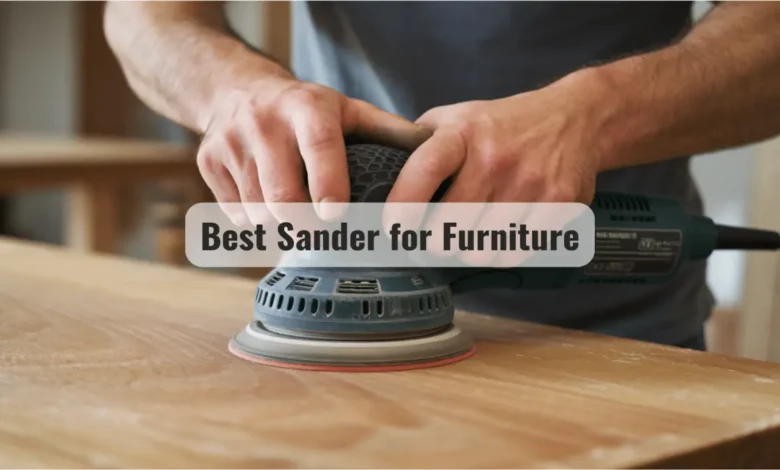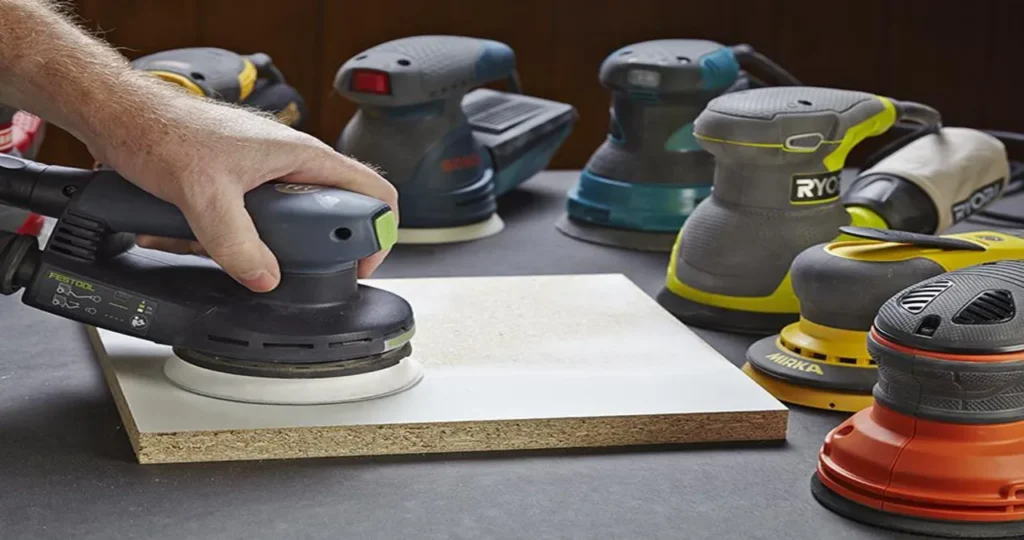Discovering the Best Sander for Furniture: A Hands On Guide to Flawless Finishes

Best Sander for Furniture: When it comes to breathing new life into tired tables, dressers, chairs, and cabinets, finding the best sander for furniture is an absolute game changer. Whether you’re an experienced woodworker or just diving into the world of DIY home makeovers, the right sanding tool can transform your project from average to absolutely stunning. The best sander for furniture isn’t just about power it’s about precision, comfort, control, and the kind of smooth finish that makes you run your hand over the surface more than once.
Furniture restoration, refinishing, or even custom crafting takes more than just a vision. The sanding process sets the foundation for everything that follows paint, stain, and sealant. That’s why so many woodworking enthusiasts and weekend warriors alike spend time researching the best sander for furniture. It’s not just a tool. It’s your partner in making each piece stand out with quality. In this comprehensive article, we’re diving deep into what makes a sander truly fit for furniture, exploring features, styles, and techniques to help you make the most informed and inspired decision possible.
Why Choosing the Best Sander for Furniture Matters
Sanding furniture isn’t just about removing an old coat of paint or varnish. It’s the vital prep work that determines how beautifully your finish will lay down, how smooth your surfaces will feel, and how durable the result will be. That’s why finding the best sander for furniture becomes so essential. Not all sanders are created equal, and certainly not all are suited for the detail, care, and finesse that furniture work demands.
When sanding furniture, you’re often dealing with delicate curves, tight corners, and a variety of surface types. The best sander for furniture has to accommodate those intricacies without causing damage. It’s easy to underestimate the importance of having the right tool until you start working with the wrong one. A sander that’s too aggressive might gouge your wood. One that’s too weak might not remove the old finish effectively. The right balance ensures that your furniture gets the care and attention it deserves.
Another major factor is your comfort. Working on furniture takes time, especially if you’re committed to doing a thorough and artful job. The best sander for furniture will be ergonomically designed to reduce fatigue. Lightweight, easy-to-grip, and vibration-controlled models make long sanding sessions more manageable. In this way, a quality sander isn’t just better for the furniture it’s better for you, too.
Different Types of Sanders and How They Apply to Furniture Work
One of the biggest hurdles for anyone starting their furniture refinishing journey is figuring out which type of sander qualifies as the best sander for furniture. There are several kinds out there, and while each has its unique strengths, not every one will suit your project or style. That’s where understanding the differences becomes key.
First, there’s the orbital sander. This type of sander is a favorite for many furniture projects because it offers a smooth, even sanding motion. It moves in a circular pattern, making it less aggressive and more forgiving ideal for curved or contoured pieces. Many woodworkers swear by this model when trying to find the best sander for furniture, especially for surfaces that need a uniform finish without deep scratches or swirl marks.
Then there’s the detail sander. This one is small but mighty, and it’s built for those tricky corners and tight spots. With a shape that resembles an iron, it gets into the grooves and edges that other sanders simply can’t reach. While it might not be the best sander for furniture overall due to its small surface area, it’s certainly the perfect sidekick for detailed work, carvings, and touch ups that require a gentle touch.
Belt sanders are another option, but these are often more suited for rougher projects. They’re fast and powerful, which makes them excellent for removing thick layers of old paint or stubborn finishes. However, they require a steady hand because one misstep could result in gouging the surface. For that reason, while a belt sander can be part of your toolkit, most people wouldn’t call it the best sander for furniture unless you’re working with large, flat areas and need aggressive removal.

Features That Define the Best Sander for Furniture
Not all sanders are made equal, even within the same category. What separates the best sander for furniture from the rest is the thoughtful details the kind that make your work easier, cleaner, and more consistent. From dust collection to variable speed settings, there are several features that should be on your radar if you’re serious about getting top quality results.
Dust collection might seem like an afterthought, but anyone who’s ever sanded indoors knows it’s a game changer. The best sander for furniture will come equipped with a reliable dust collection bag or port, helping to minimize the mess while also keeping particles out of the air. It’s about more than just cleanliness it’s also about safety and visibility while you work.
Another feature to consider is variable speed control. Different wood types and finishes require different sanding speeds. A one speed sander can limit your ability to finesse your finish, especially when transitioning from flat areas to curved sections or from hardwood to softwood. The best sander for furniture will offer adjustable settings, giving you complete control over how aggressive or gentle your sanding is.
Comfort is also crucial. Ergonomic design, padded handles, and lightweight construction go a long way when you’re sanding for extended periods. The best sander for furniture should feel like a natural extension of your hand something you can hold comfortably without straining your wrist or fingers. These ergonomic touches add up to smoother results and less fatigue.
Sanding Techniques That Elevate Your Furniture Projects
Choosing the best sander for furniture is only half the equation. The other half comes down to how you use it. Technique matters a lot. Even the most advanced sander won’t deliver beautiful results if used improperly. From pressure application to sanding direction, these subtle factors can completely transform your outcome.
First, let’s talk about pressure. One of the most common mistakes people make is pressing too hard while sanding. It’s tempting to apply extra force, especially when dealing with stubborn finishes or rough patches. But with the best sander for furniture, pressure should be minimal. Let the machine do the work. Pressing too hard can cause uneven wear, create divots, or damage the wood surface. A light touch, combined with patience, yields the most consistent results.
Direction also plays a critical role. Always try to sand with the grain, not against it. Even with high quality sandpaper and a premium sander, going against the grain can result in visible scratches that become more noticeable after staining or finishing. The best sander for furniture will glide smoothly when following the grain, and your final result will reflect that attention to detail.
Another tip is to gradually move through grit levels. Start with a coarser grit to remove old finishes or blemishes, then work your way up to finer grits for that buttery smooth surface. The best sander for furniture will make these transitions seamless, especially if the pad allows for easy switching of sandpaper.